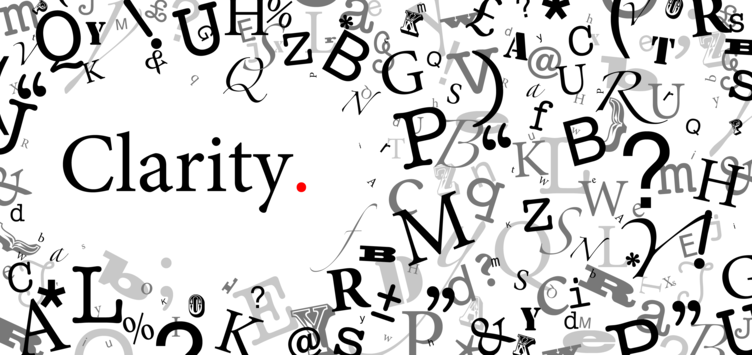
So let’s not build the suspense, make you read to the bottom of the article, here it is – CLARITY.
Clarity can be really difficult to achieve when your team is swamped with competing demands, shifts in priorities and processes (that are generally poorly documented) to navigate through. Your team’s band width may be such that detailed information may be unnecessary and difficult to absorb. I like to keep it simple and below is an idea you might like to try to improve clarity in your organisation.
In order to explore the concept of clarity we need to make an assumption:
- Your organisation has a vision – you know what you want to do and there is broad buy in.
So now how to you build on that vision to give every team member clarity about their role in achieving the vision and what they are responsible for delivering? Some will say the organisation chart and position descriptions do this so it about communicating around those and clarity solved. Well maybe, but let’s reflect on how often employees refer to the organisational chart or their position description to work out what they are meant to be doing in their daily activities? Not very often, if at all….
Bob Behn, who I had the fortune to study with, has a great quote about organisational charts:
‘The org chart is a fiction – an attractive fiction but misleading fiction. It suggests that the organization functions through formal orders, carried out by methodical functionaries while concealing the relationships that create the ability to produce real results.’
https://thebehnreport.hks.harvard.edu/files/thebehnreport/files/march2008.pdf
With this in mind, I would propose a different way to provide clarity. Rather than building a traditional organisational chart consider what Gino Wickman, in his book ‘Traction’, calls an accountability chart. Rather than focussing on titles and people work out what each area of the organisation is responsible for delivering. There should only be about five accountabilities for each area and then drill down through the various functions until you have captured all the accountabilities for individual business units within that function. Don’t list people or titles just the functions and what that function delivers. The outcome will be a chart the clarifies function, in line with the vision (or not and then there needs to other conversations – not for today’s article) and will allow those within that area to understand what their group is doing to support the vision. Importantly, the accountability chart does not define communication lines and as Wickman quite rightly points out:
‘Communication should flow freely across all lines where necessary, creating an open and honest culture.’
Wickman, G. (2011), Traction, Benbella Books, Texas, p.99
Now that each area knows what it is meant to be delivering, conversations with your team can have a greater purpose. The smoke and haze of what they are meant to achieve is removed and importantly employees are not required to remember all those detailed documents but rather just five key accountabilities (at most) to which they contribute to deliver on the organisational vision.
It is important to remember the power of the accountability chart lies in the development of the accountabilities. These accountabilities should form the foundation of conversations and other communications with your team. It is not something you build and stick on a wall or a web page and expect everyone to get it or refer to it. It is about using the content.
The accountability chart is one way to build clarity in your organisation. I’m sure there are many others. What are some of the ways you have provided clarity to your team?
Murray Smith is a professional EOS implementer. For information about understanding ‘Traction’ and Murray please refer to: https://www.eosimplementers.com.au/the-eos-story



